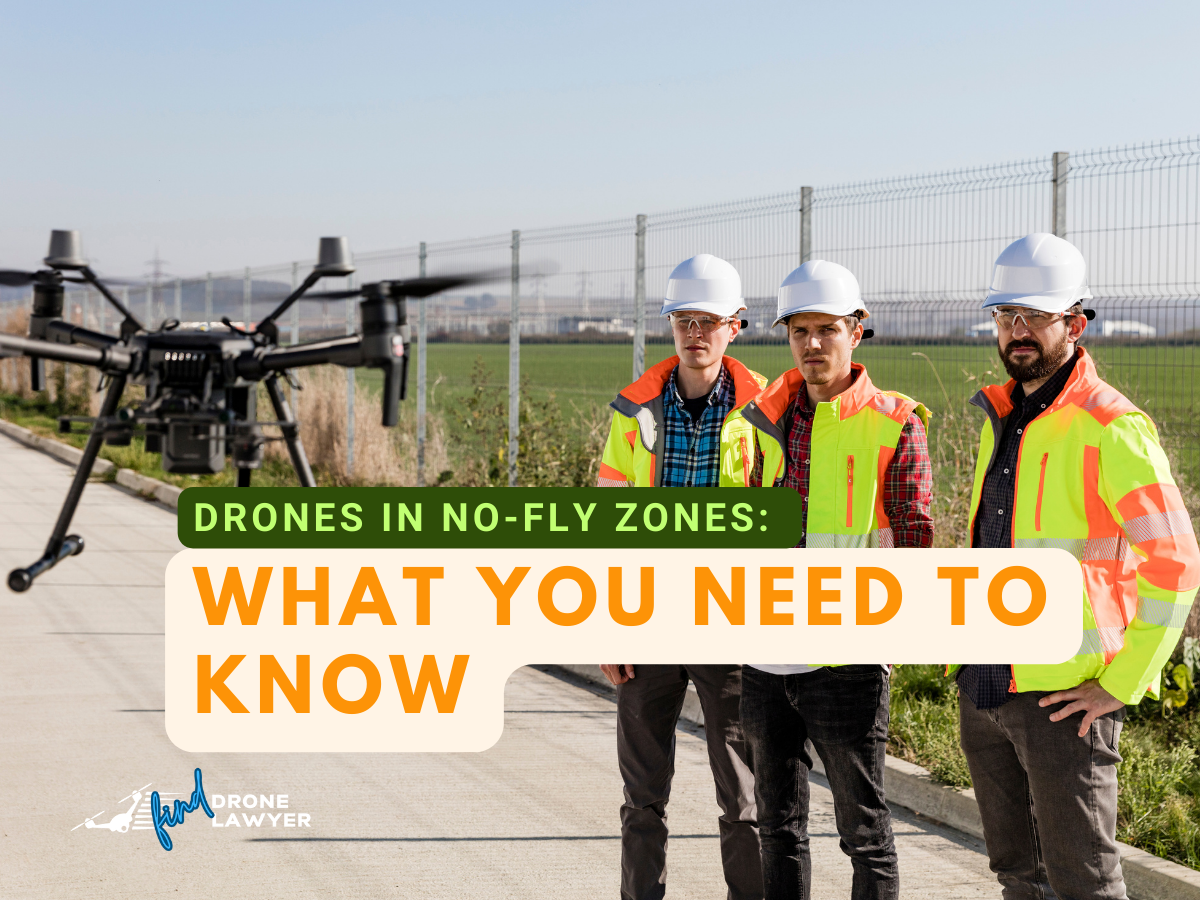Dedicated to your success
Drone Lawyer
Drone Lawyer





Drones in No-Fly Zones: What You Need to Know
In recent years, drones have revolutionized industries ranging from photography and videography to agriculture and infrastructure inspection. These versatile flying machines have opened up new possibilities and perspectives for both professionals and hobbyists. However, it’s important to remember that with great power comes great responsibility. Understanding and respecting no-fly zones is crucial for both safety and legal compliance. In this article, we’ll delve into what you need to know about drones in no-fly zones.
Defining No-Fly Zones
No-fly zones are areas where the operation of drones is prohibited or heavily restricted. These zones are put in place for various reasons, including national security, public safety, and privacy concerns. They can encompass areas around airports, government buildings, military installations, and events with large crowds, among others.
Legal Implications
Operating a drone in a no-fly zone is not only dangerous, but it’s also illegal. Violating airspace regulations can lead to severe penalties, including fines and even criminal charges. It’s crucial for drone operators to be aware of and adhere to the regulations set forth by their respective countries and local authorities.
Using Technology to Identify No-Fly Zones
Drone manufacturers and app developers have integrated technology that helps drone operators identify no-fly zones. GPS systems in drones can be programmed to prevent takeoff or flying within restricted areas. Additionally, there are smartphone apps and online resources that provide up-to-date information on no-fly zones, ensuring that operators have the most current data.
Geofencing and Software Limitations
Many drones come equipped with geofencing technology, which creates a virtual boundary around no-fly zones. When a drone approaches one of these zones, it will automatically reduce its altitude or prevent further movement into the restricted area. While geofencing is a valuable safety feature, it’s not foolproof, so operators should always double-check their surroundings.
Authorization for No-Fly Zones
In certain circumstances, there may be a legitimate reason to fly a drone in a no-fly zone, such as for professional photography or videography with proper permits. In such cases, obtaining authorization from the relevant authorities is essential. This process may involve submitting a request, providing documentation, and obtaining clearance before conducting any flights.
Remaining Vigilant About Changing Regulations
Regulations regarding no-fly zones are subject to change, so it’s essential for drone operators to stay informed about any updates or amendments to airspace rules. This can be done through official government websites, industry forums, and by following reputable drone-related news sources.
Respecting Privacy and Security
Even when operating outside of no-fly zones, it’s crucial to respect people’s privacy and security. Avoid flying over private property without obtaining proper consent, and be mindful of sensitive areas such as schools, hospitals, and residences.
Drones have undoubtedly transformed various industries, offering innovative solutions and new perspectives. However, operating drones in no-fly zones is a serious matter that carries significant legal and safety implications. Understanding, respecting, and abiding by no-fly zone regulations is not only a legal requirement but also a crucial step toward ensuring the continued responsible use of this powerful technology. By staying informed and practicing safe and ethical drone operation, we can all contribute to a safer and more harmonious airspace for everyone.

At DroneLawyer.net, we pride ourselves on being the number one source of free drone legal information and resources on the web.
Headquarters - Dallas, Texas

At DroneLawyer.net, we pride ourselves on being the number one source of free drone legal information and resources on the web.
Headquarters - Dallas, Texas



